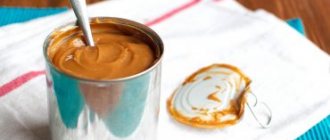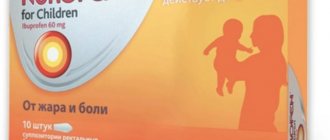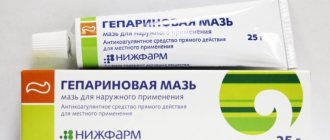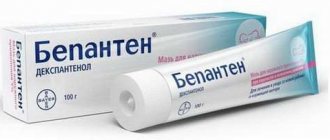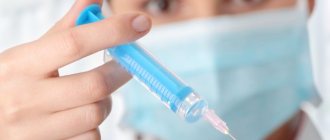During the postpartum period, a woman’s body is vulnerable to various infections, especially infections of the genital organs. Most often, thrush appears after the birth of a child. Other typical diseases for a nursing mother are vaginitis and bacterial vaginosis. This is due to the fact that lactation requires enormous energy expenditure, leading to weakened immunity.
To prevent and eliminate infectious pathologies of the genital organs, Hexicon is widely used. This medication has good antiseptic properties, so doctors often prescribe it to patients after childbirth. However, many of them are interested in the question of whether Hexicon suppositories can be used during lactation or not. This will be discussed in the article.
Active components of Hexicon
The active ingredient of these vaginal suppositories is chlorhexidine bigluconate, which is a local antiseptic. The drug is effective in the fight against gram-negative, gram-positive and protozoan microorganisms: chlamydia, Trichomonas vaginalis, Neisser gonococcus, treponema, chemoorganoheterotrophs and Gardnerella vaginalis. But acid-resistant fungi, bacteria, viruses and spores are practically insensitive to the action of such suppositories.
This medication also contains an auxiliary component such as polyethylene oxide.
Indications for use
The drug is prescribed in different situations:
- before childbirth to prevent the development of inflammatory processes and infection of the child when passing through the birth canal;
- before intervention in the reproductive system (abortion, surgery as a method of treating a disease, intrauterine examination);
- for the treatment of inflammatory processes occurring in the genital organs;
- for the prevention of infectious diseases caused by increased sensitivity of microflora and capable of sexual transmission.
Chlorhexidine is a stable substance that, after application, remains on the treated surface and continues to act. If blood and pus are present, the activity of the compound is reduced but does not disappear completely. This determines its use for bleeding, menstruation and purulent inflammation.
Hexicon is used not only in gynecology, but also for the disinfection of purulent wounds and burns, as well as in dentistry.
Effect of the drug on the child
It is worth highlighting three advantages of Hexicon over other drugs that have antiseptic and antimicrobial effects.
- Chlorhexidine bigluconate does not affect the normal composition of the vaginal microflora. That is, beneficial lactobacilli do not react to the action of the substance. This eliminates the need to subsequently use probiotics to restore local microflora.
- Even with regular use, addiction to the drug does not occur; microorganisms resistant to it do not form.
- The compound is not absorbed into the blood and is not absorbed by the mucous membrane of the vagina. Consequently, no systemic changes occur in the body, and therefore its use during lactation is permissible without risk to the child.
Since the drug is not absorbed or absorbed, it does not enter the bloodstream, and the composition of breast milk remains unchanged. Thus, Hexicon does not have any harmful effect on the child.

Using Hexicon while breastfeeding is safe for the baby
For what pathologies is the drug prescribed?
Hexicon suppositories can be used during lactation to treat many ailments. They are widely used to eliminate bacterial and infectious diseases of the female reproductive system - vulvovaginitis of various natures or vaginitis.
These suppositories with an antiseptic effect help protect against syphilis, chlamydia, gonorrhea pathogens, and Trichomonas. Chlorhexidine is used as a prophylactic agent. It prevents infection after unprotected sexual intercourse.
Hexicon is also used during lactation to protect the pelvic organs when performing the following procedures:
- thermal cauterization of erosion in the uterus;
- surgical termination of pregnancy;
- installation of a contraceptive device and other surgical interventions.
In addition, doctors prescribe suppositories before childbirth to prevent the development of sexually transmitted and sexually transmitted infections.
Analogs
The following antiseptics have a similar effect:
- Hexicon;
- Chlorhexidine (solution, gel, ointment);
- Miramistin (spray).
Chlorhexidine or Miramistin? Chlorhexidine for thrush. Side effect of the drug
Hexicon suppositories during pregnancy: reviews, price
MIRAMISTIN, instructions, description, application, side effects.
There are a large number of drugs with the same active ingredient:
- Hexicon;
- Katedzhel;
- Amident;
- Hibiscrub;
- Citeal;
- Plivasept and others.
Products such as Hexicon can be used to treat inflammatory diseases in children.
Hexicon candles during pregnancy
Hormonal changes during pregnancy provoke a change in the vaginal microflora and a sharp decrease in protective forces. Such changes lead to the unhindered entry of pathogens into the body, which can begin to multiply at any time. Failure to detect symptoms of pathology in a timely manner can lead to infection of the fetus.
The drug "Hexicon" is completely safe for a child; the active ingredient (chlorhexidine) does not affect its formation, vital activity and growth. It dissolves in the vagina without penetrating into the blood, placenta, or digestive tract. Even when a woman uses suppositories in the first months of pregnancy, they do not have a negative effect on the development of the main organ systems of the fetus.
The antiseptic "Heksikon" is approved for use for the treatment of pathologies of the female genital area during pregnancy from 1-12 weeks. Suppositories from the 13-35th week act at the local level, without penetrating into the bloodstream, eliminating the possibility of damage to the embryo. They are aimed at creating favorable microflora in the vagina for the normal course of pregnancy during this period.
In the final stages, suppositories are used to prevent the appearance of inflammatory processes and diseases of the reproductive system. In the first days after the birth of the baby, they are prescribed to avoid suppuration of the sutures.

Indications
Hexicon suppositories are used to prevent the following sexually transmitted infections:

An antiseptic is used to treat diseases in chronic or acute form:
- Inflammation of the cervical canal of the uterus;
- Inflammatory process in the vaginal part of the cervix;
- Trichomonas or nonspecific colpitis.
The medication is used to protect the pelvic organs during the following procedures: installation of a contraceptive device, diathermocoagulation of erosion in the uterus, abortion and other surgical operations. Suppositories are used before childbirth to prevent the development of sexually transmitted and sexually transmitted infections.
The solution is also used to prevent sexually transmitted infections. Together with other drugs, the liquid form is used for inflammation of the urethra. The liquid is used to disinfect burns, purulent wounds, areas of the internal membranes and skin that have become infected. The solution is used to rinse the mouth for periodontitis, gum inflammation, ulceration of the mucous membranes, etc.
The ointment treats inflammation of the glans penis or foreskin, vulvitis, vaginitis, purulent skin lesions, etc.
"Hexicon" during lactation: instructions for use
The duration of treatment with this drug is 10 days. It is recommended to administer 1-2 suppositories per day; they must be inserted deep into the vagina. It is best to do this in a lying position, slightly raising your pelvis. Usually this period is quite enough for a complete cure, but it is still recommended to visit a doctor after a course of therapy to undergo a re-examination.
The gynecologist may decide to extend treatment for another 10 days if complete recovery has not occurred. It is prohibited to interrupt therapy or stop using Hexicon on your own during lactation. Even when the unpleasant signs of the pathological process disappear, the total dosage cannot be reduced.
Features of use
Hexicon is prescribed for preventive and therapeutic purposes. It is good for two years and is stored at room temperature. You do not need a prescription to purchase from a pharmacy.
The use of suppositories and tablets has some peculiarities. If you insert them shallowly, there is a risk of the contents falling out or leaking out until the inside is completely dissolved. In this regard, the use of daily pads is required during the treatment period.
Doctors advise you to abstain from sexual intercourse while you are using the drug.
Methods of using different dosage forms of Hexicon - table
| Pills | Suppositories | Solution | Gel | |
| Treatment | The tablet is moistened with water and inserted into the vagina as deeply as possible. The procedure is carried out once or twice every day. Treatment lasts for 7–10 days. | The candle (suppository) is carefully inserted into the vagina as deeply as possible. After this, it is preferable to lie down for 1.5–2 hours, placing a bolster, blanket, or pillow in order to elevate the lower part of the body and avoid leakage of the drug. The duration of treatment is 7–10 days. | The tip is inserted into the vagina and, pressing on the bottle, the mucous membrane is irrigated. Then the external genitals are treated. It is recommended to visit the toilet 2 hours after the procedure. | Apply to the mucous membrane 2 times a day for 7–10 days. |
| Prevention | The drug is introduced into the vagina within two hours after sexual intercourse, no later. | |||
Treatment of pathologies with vaginal suppositories
Cystitis is a disease that causes severe discomfort to a woman. The use of Hexicon suppositories helps to get rid of the unpleasant symptoms of the disease and eliminate the source of the problem. Treatment of this pathology involves taking antibiotics, anti-inflammatory drugs, as well as means to relieve the burning sensation.
The vaginal suppositories under consideration for chronic or acute cystitis relieve pathological changes in the shortest possible time. They act on existing infections, thereby eliminating the pronounced symptoms of the disease. Additionally, antispasmodic drugs are also used, which are included in the complex of medications for cystitis, to relieve pain.
The Hexicon remedy is prescribed for cervical erosion in the early stages, when the wound is not yet very large. Vaginal suppositories are inherently soft, therefore, they will not further damage the mucous membrane. In addition, these suppositories act quickly and have no effect on vaginal lactobacilli.
How does it affect lactation and the baby during feeding?
There is no reliable information about the effect of Hexicon on lactation in medicine: the drug does not disrupt milk production or reduce its quantity.
The use of the drug during breastfeeding, subject to the permitted dosage, does not affect the child: the active components are not absorbed into the blood and do not penetrate into mother's milk.
After pregnancy and childbirth, women become more sensitive to the components of the drugs. If an allergy occurs to substances in Hexicon, the nursing mother’s body experiences stress, which can negatively affect the lactation process.
Tags: hexicon, possible
- Related Posts
- Wood treatment against fungus and mold
- Burnt alum for nail fungus
- How to treat cracked heels quickly
« Previous entry
Hexicon suppositories during lactation: side effects
Some women experience bloody secretion from the genital tract after using this drug. If such discharge is observed during treatment, it is better to visit a gynecologist. Even after the administration of suppositories, a burning sensation may occur. If such a reaction occurs, it is advisable to also stop using them. In addition, when using this drug, negative consequences may occur, such as:
- dermatitis;
- itching;
- dry skin;
- allergy;
- photosensitivity;
- stickiness of the skin of the hands.
Contraindications and side effects
Hexicon has the only contraindication – hypersensitivity to the components of the drug. It is not recommended to use an antiseptic to treat children under 13 years of age.
The drug does not have a systemic effect, is poorly absorbed into the vaginal walls, for this reason it is recommended for use during pregnancy and breastfeeding.
If there is blood or pus in the vagina, the effectiveness of the medicine is reduced. During treatment with Hexicon, it is prohibited to use intimate hygiene products containing sodium lauryl sulfate, saponins or sodium carboxymethylcellulose.
- allergic rash;
- itching;
- dry skin;
- inflammation of the skin;
- a sticky feeling on the skin of the hands, which disappears after 5 minutes;
- rash as a skin reaction to ultraviolet rays.
If you use external forms of Hexicon, then make sure that the drug does not penetrate into wounds that occur due to damage to the brain, skull and soft tissues of the head, rupture of the eardrum, etc.
High temperature enhances the bactericidal effect of Hexicon.
In what cases is it better to avoid using vaginal suppositories?
The only contraindication to the use of Hexicon during lactation is individual intolerance to the components that it contains. It will not harm the baby’s health, since it acts locally without changing the composition of breast milk. The body of most women tolerates this medication very well.
How to replace Hexicon during lactation if side effects occur? An analogue of these suppositories is “Chlorhexidine”, which has an identical spectrum of action and chemical composition. There are other products with the same active substance:
- "Hibiscrub";
- "Amident";
- "Depantol".
Can Hexicon be used while breastfeeding? Indications and recommendations for use
Hexicon is intended for the treatment and prevention of infectious and inflammatory diseases of the genital tract. Suppositories and vaginal tablets with chlorhexidine bigluconate are used:
- in the treatment and prevention of sexually transmitted diseases, as a combination therapy;
- before surgical interventions as a drug to prevent the development of complications;
- as an antiseptic for the prevention of inflammatory processes after childbirth;
- before intrauterine examinations;
- in combination with antibacterial agents - for cystitis and vaginitis.
Hexicon in the form of a gel and solution is also additionally used:
- for stomatitis, gingivitis, periodontitis;
- for treating wounds and burns on the skin and mucous membranes.
As a prevention of sexually transmitted diseases, Hexicon is effective if administered into the genital tract no later than 2 hours after unprotected sexual intercourse.
Hexicon is not approved for use in case of individual intolerance to the components of the composition. The drug in the form of a solution is not recommended for use for dermatitis and skin sensitive to chlorhexidine. The lack of a positive effect when treated with Hexicon is a reason to consult a doctor to adjust the therapy and select a drug with a similar effect.
When applied locally, the drug is not absorbed into the bloodstream, which means that the likelihood of an overdose is eliminated. In rare cases, the use of Hexicon leads to the following side effects:
- allergic reactions in the form of rash, redness, itching, swelling;
- burning sensation in the vagina.
We suggest you read: Is it possible to kill nail fungus with iodine?
The use of Hexicon in the form of a solution or gel can cause:
- dry skin and mucous membranes;
- dermatitis;
- taste disturbance (when treating the oral cavity).
Treatment of side effects involves discontinuation of the drug and symptomatic therapy.
Weakened immunity after childbirth and during lactation can lead to infectious and inflammatory processes in the genital organs of a young mother. Refusal to treat the disease before finishing breastfeeding can lead to serious complications for the female body.


